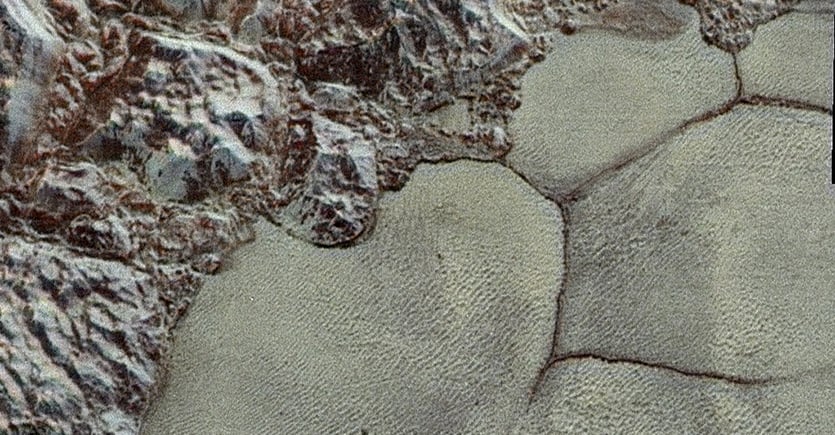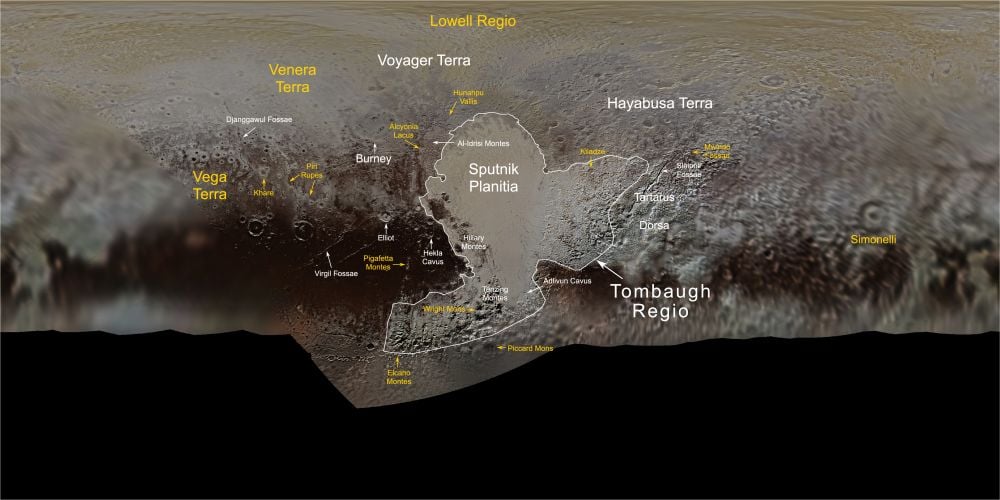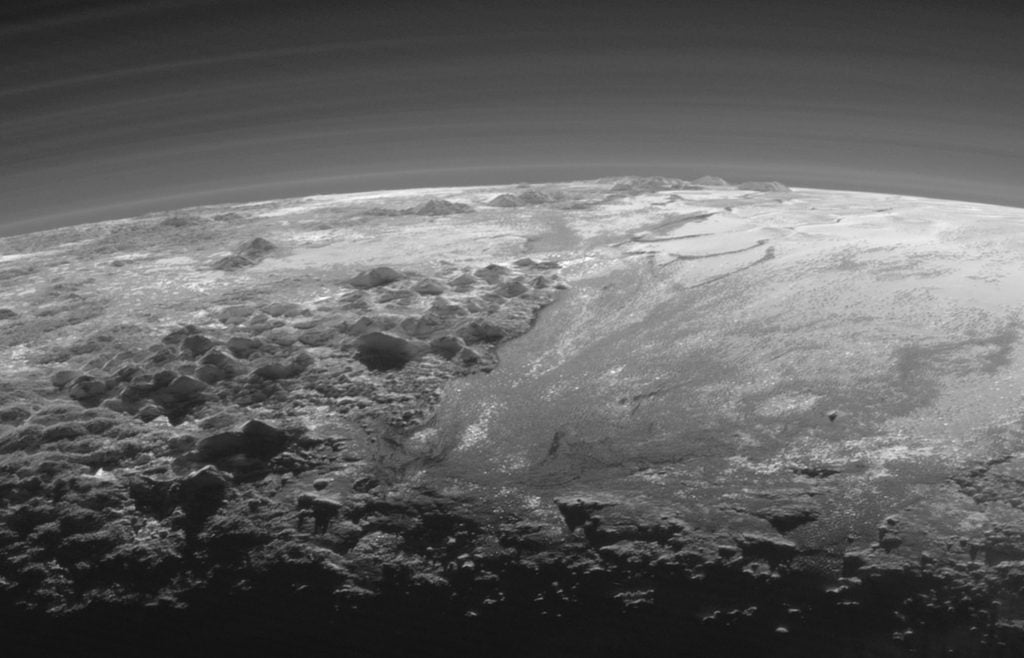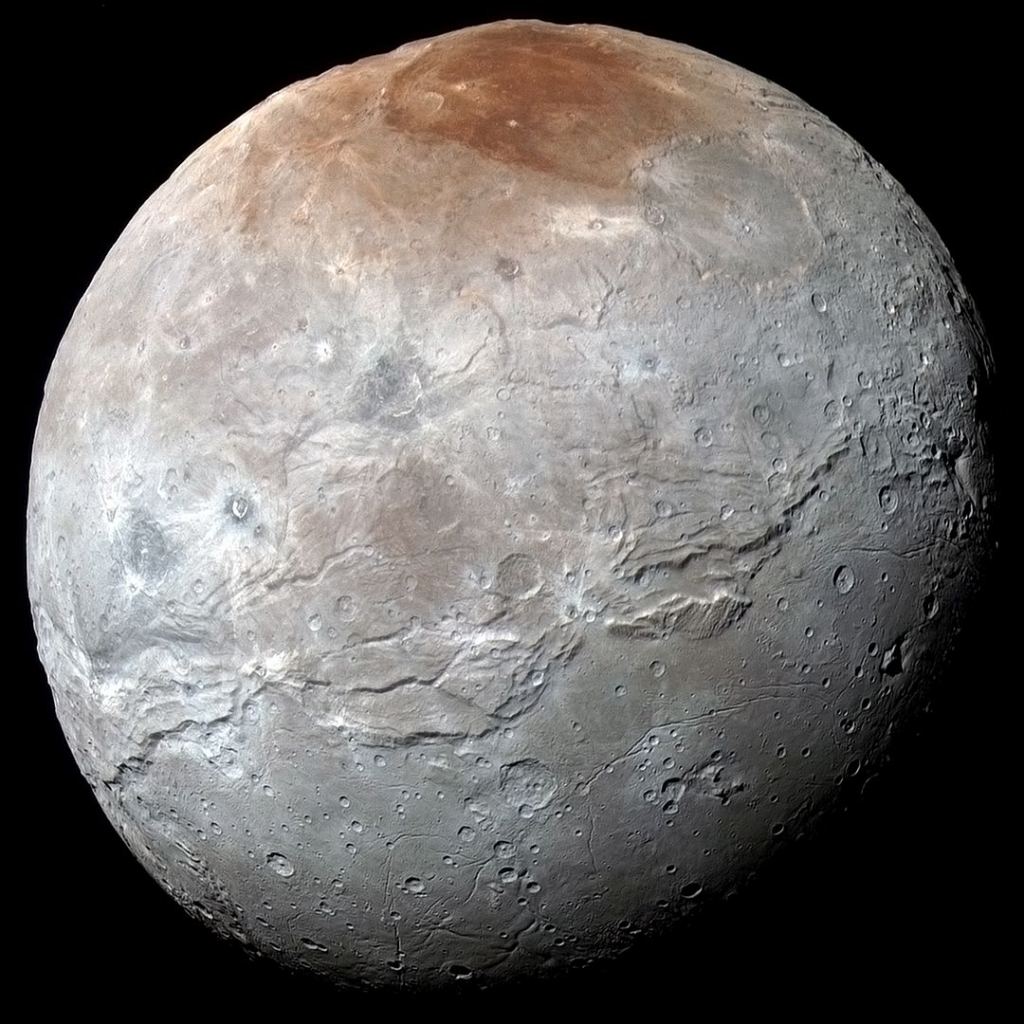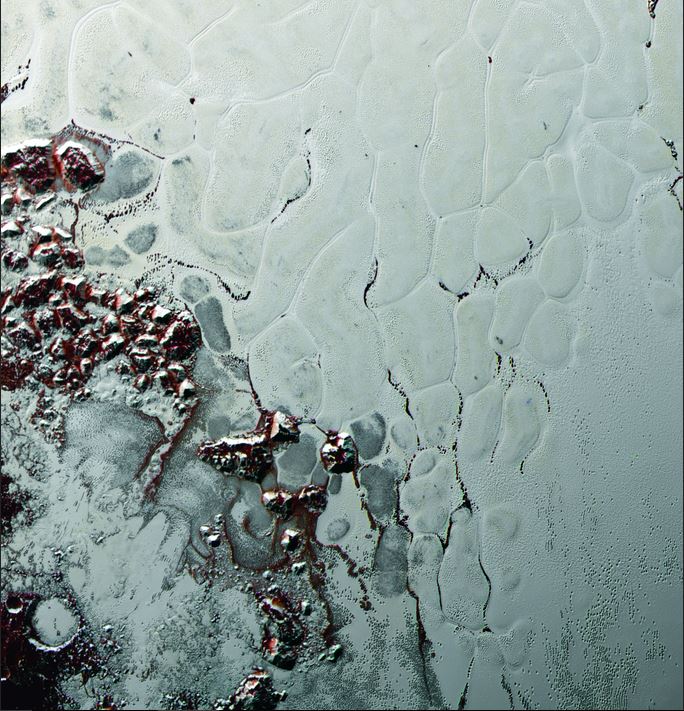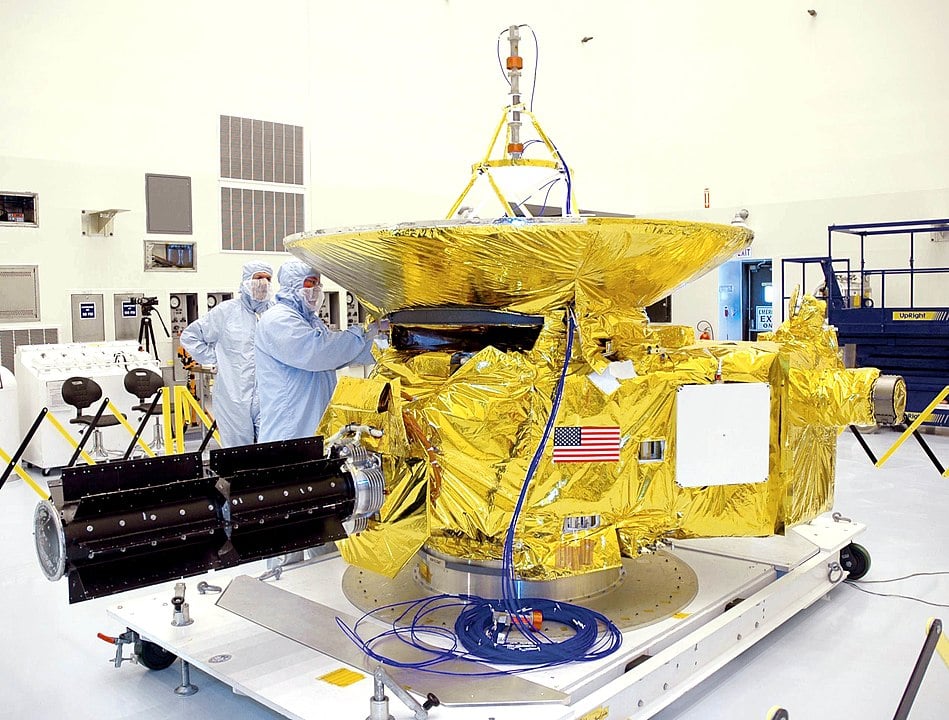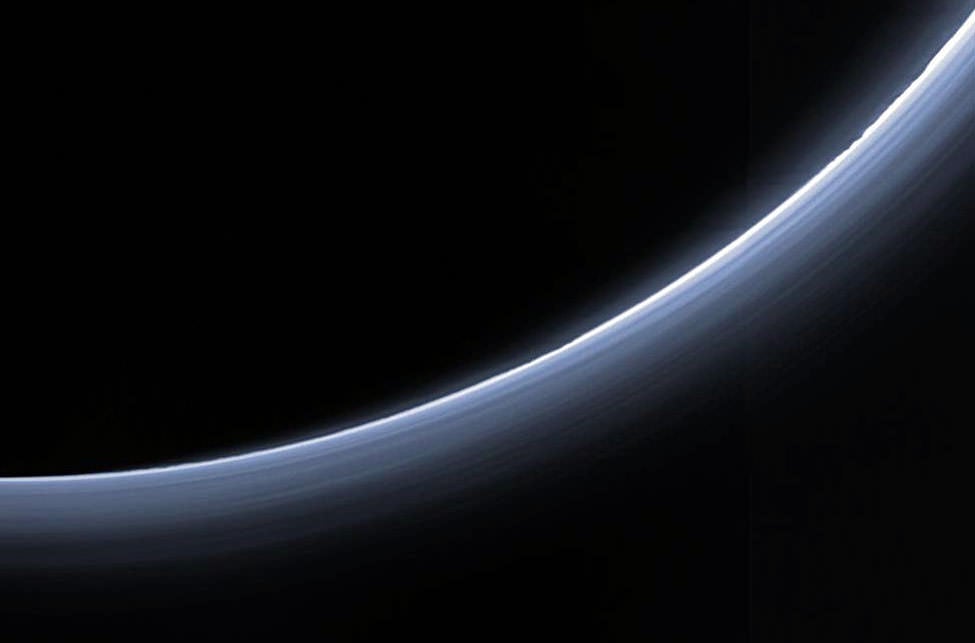NASA's New Horizons mission taught us a lot about Pluto, the ice dwarf planet. But the spacecraft sped past Pluto so quickly, we only got high-resolution images of one side of the planet, the so-called "encounter side." New Horizons gave us a big leap in understanding, but in a way, it asked more questions than it answered.
The next step is clearly an orbiter, and now NASA is starting to seriously consider one.
NASA has given the Southwest Research Institute (SwRI) funding to start developing the idea. SwRI is tasked with investigating "the important attributes, feasibility and cost of a possible future Pluto orbiter mission."
It's far from a sure thing. This study is one of 10 approved by NASA in advance of the next Planetary Science Decadal Survey. The study will develop design requirements for an orbiter and its payload, make some preliminary cost estimates, and assess risks for new technologies needed for the mission. The results of this study will be delivered to the National Academy Planetary Decadal Study that begins in 2020.
New Horizons visited Pluto before heading deeper into the Kuiper Belt and visiting 2014 MU69, a Kuiper Belt Object (KBO) also known as Ultima Thule. The spacecraft may even visit a third KBO. The proposed Pluto Orbiter would follow a similar path.
"We're excited to have this opportunity to inform the decadal survey deliberations with this study," said SwRI's Dr. Carly Howett, who is leading the effort. "Our mission concept is to send a single spacecraft to orbit Pluto for two Earth years before breaking away to visit at least one KBO and one other KBO dwarf planet."
The SwRI's previous work on a Pluto orbiter laid the groundwork for this study. In 2018, SwRI used their own research funds to develop the idea for an orbital tour that can investigate Pluto then head further out into the Kuiper Belt.
"...it is possible to use gravity assists from Pluto’s largest moon, Charon, to escape Pluto orbit and to go back into the Kuiper Belt..." Dr. Alan Stern, Southwest Research Institute
"In an SwRI-funded study that preceded this new NASA-funded study, we developed a Pluto system orbital tour, showing the mission was possible with planned capability launch vehicles and existing electric propulsion systems," said SwRI's Dr. Alan Stern, principal investigator of the New Horizons mission as well as the SwRI-funded study. "We also showed it is possible to use gravity assists from Pluto's largest moon, Charon, to escape Pluto orbit and to go back into the Kuiper Belt for the exploration of more KBOs like MU69 and at least one more dwarf planet for comparison to Pluto."
The key hurdle in an orbiter mission to Pluto is propellant. It takes a lot of propellant to orbit around Pluto and study its moons, its atmosphere, its solar wind interactions, and other aspects of the Pluto system. But the 2018 study showed that a Pluto orbiter could use gravity-assists from Pluto's satellite Charon to study Pluto for several years, and could use the same gravity assist to head deeper into the Kuiper Belt. This is similar to how the Cassini mission used Saturn's large moon Titan.
"This is groundbreaking,' said Stern about the 2018 study. "Previously, NASA and the planetary science community thought the next step in Kuiper Belt exploration would be to choose between 'going deep' in the study of Pluto and its moons or 'going broad' by examining smaller Kuiper Belt objects and another dwarf planet for comparison to Pluto. The planetary science community debated which was the right next step. Our studies show you can do both in a single mission: it's a game changer."
The 2018 plan also allowed for an up close encounter with Charon, Pluto's largest satellite, as well as other lunar flybys.
Tiffany Finley is a software lead at SwRI's Space Science and Engineering Division. "This tour is far from optimized, yet it is capable of making five or more flybys of each of Pluto's four small moons, while examining Pluto's polar and equatorial regions using plane changes," said Finley. "The plan also allows for an extensive up-close encounter with Charon before dipping into Pluto's atmosphere for sampling before the craft uses Charon one last time to escape into the Kuiper Belt for new assignments," she said.
The 2018 study also showed that a Pluto Orbiter could use the same xenon ion propulsion system as the Dawn mission to travel to other Kuiper Belt Objects. It also showed that the orbiter could enter orbit around another dwarf planet in the Kuiper Belt.
"Who would have thought that a single mission using already available electric propulsion engines could do all this?" Stern said about the 2018 study. "Now that our team has shown that the planetary science community doesn't have to choose between a Pluto orbiter or flybys of other bodies in the Kuiper Belt, but can have both, I call this combined mission the 'gold standard' for future Pluto and Kuiper Belt exploration."
There are several obstacles that a Pluto Orbiter needs to deal with. One is data communication. New Horizons only had 16 GBs of data storage and took 16 months to transmit all of its data from the Pluto flyby back to Earth. That obviously won't work for an orbiter. It's a simple matter to increase the data storage, but a much more powerful data transmission system will be needed.
It's a good sign that NASA has decided to fund a more detailed study into the SwRI's Pluto Orbiter proposal. SwRI has a strong track record of mission management, including Juno, New Horizons, and IBEX. They've also developed technologies and instruments for multiple NASA and ESA missions.
Thanks to New Horizons, we know that Pluto is much more complex than we thought. We know that the surface of Pluto is far more active than we could've imagined. We know that Pluto has an atmosphere, and we think that Pluto once had liquid on its surface. Pluto may also have a sub-surface ocean, possibly linked to Pluto' so-called heart, the Tombaugh Region.
New Horizons really only gave us a snapshot of Pluto. It's an extremely enticing snapshot, but the flyby lasted only about 24 hours, and there's a lot more to learn.
More:
- Press Release: SwRI TO PLAN PLUTO ORBITER MISSION
- 2018 Press Release: SwRI TEAM MAKES BREAKTHROUGHS STUDYING PLUTO ORBITER MISSION
- NASA: One Year Later: New Horizons’ Top 10 Discoveries at Pluto
 Universe Today
Universe Today

